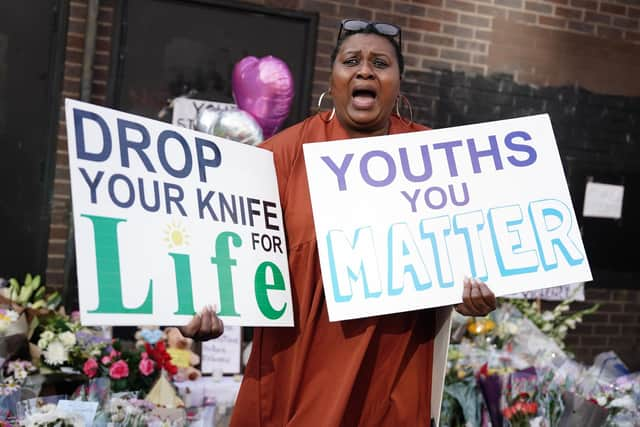Why can’t we break the cycle of youth violence if the cures are so clear? - Dr Alan Billings
One of the most recent and most shocking was the killing of 15-year-old Elianne Andam on her way to school in Croydon. “Our hearts are broken”, the family said, and in the immediate aftermath that seemed to me the only thing to be said and the only thing worth listening to; but everything was immediately politicised.
I can’t comment on the killing of Elianne because that is an on-going investigation and we cannot speculate on what we don’t know. But I will comment on what others said in more general terms about why so many young people – they believed – continue to carry knives and what should be done about it. These included people from the local community, youth workers, MPs, councillors, commentators and academics. I listened to what they all had to say.
Advertisement
Hide AdAdvertisement
Hide AdBy chance, I met this week a prison officer who was telling me about her experiences of what is happening to youth custody – the young offender institutions (YOIs). Although we are sending fewer young people to prison than we did when I was a member of the Youth Justice Board, more than a decade ago, those who do have custodial sentences tend to be those who have committed more serious and violent crimes, which probably doesn’t make the task of rehabilitation in YOIs any easier.


Listening to the voices from Croydon, it all had a wearisome familiarity about it and was all very predictable. This is not to say that what they said was wrong or misguided, only that it begs questions about why the cycle of youth violence cannot be broken if the cures are so clear and, by and large, many of those interventions are being attempted.
Here in South Yorkshire, for example, I fund many youth activities such as football, angling and boxing clubs, because we know that young people on the streets can be lured into gangs and become involved in violence. So we seek to divert them.
If we can provide meaningful activities where young people can find companionship and good role models, older people whom they will respect and who will mentor them, we can keep at least some away from violence. And there are many other groups and charitable foundations that do similar things.
Advertisement
Hide AdAdvertisement
Hide AdWe have a Violence Reduction Unit that supports preventative work, including projects in schools. We enable those with ‘lived experience’ either as victims or perpetrators to meet with young people to speak about the impact on their lives of stabbings. I could go on. All these were things that those interviewed in Croydon were either already supporting or advocating. So what can we say if we can’t stop youth violence? I have no doubt that all the initiatives I outline above have an impact on the lives of those who are engaged with them, though we can’t always know how many are deterred and diverted. But what I think we are sometimes missing is something bigger and broader that will need a bigger and broader approach. The bigger task is supporting families and then communities so that all our young people, wherever they live, feel they are in a safe place. And that is a much bigger task than the interventions targeting individuals.
A shortened version of the Police and Crime Commissioner for South Yorkshire’s latest blog post.